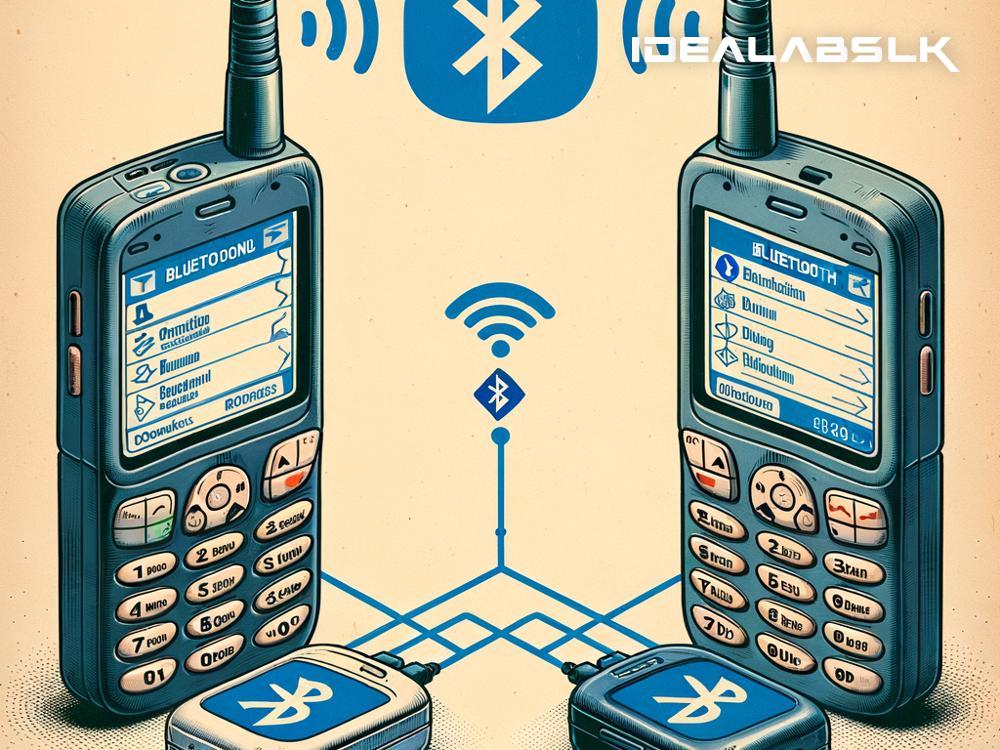Title: A Simple Guide to the History of Bluetooth: How It Connected Our World
Have you ever wondered how different devices like your phone, wireless headphones, or smartwatch communicate with each other so seamlessly? The answer lies in a magical technology called Bluetooth. Today, Bluetooth is a common feature in billions of devices worldwide, but have you ever stopped to think about how this incredible technology came to be? Let's take a stroll down memory lane and explore the fascinating history of Bluetooth in simple English.
The Birth of Bluetooth: A Viking Inspiration
The story of Bluetooth begins in 1994 when engineers at Ericsson, a Swedish telecom company, started looking for ways to develop wireless headsets. They were on a quest to eliminate the pesky cables that always seemed to tangle or confine how far you could move from your device. However, they ended up creating something much bigger and more impactful.
The name "Bluetooth" might sound quirky for a piece of technology, but it has a historical flair. It was named after a 10th-century king, Harald Bluetooth, who united Denmark and Norway, much like how Bluetooth technology aimed to unite communication protocols. The symbol for Bluetooth, if you've ever wondered, combines King Harald's initials in ancient runes.
The official birth year of Bluetooth was 1998, when several tech giants, including Ericsson, Nokia, IBM, Toshiba, and Intel, came together to form the Bluetooth Special Interest Group (SIG). This collaboration was crucial. Instead of competing to make their own versions of wireless technology, they decided to join forces. The result? A universal standard that devices from different manufacturers could use to communicate wirelessly.
Bluetooth Takes Its First Steps
The first version of Bluetooth (1.0) had its limitations. It was slow, and connections weren't as stable as hoped. Users often found it complicated to connect devices, and when they did succeed, maintaining a steady connection was another challenge. Despite these initial hiccups, the convenience of wireless communication kept the interest alive.
As technology advanced, so did Bluetooth. The introduction of Bluetooth 1.1 in 2002 marked a turning point, offering better connectivity and solving many of the issues that plagued the first version. It was around this time that the first mobile phones with Bluetooth started to appear, introducing the world to the convenience of hands-free calling.
The Evolution to a Household Name
Fast forward to today, and Bluetooth has evolved through various versions, with Bluetooth 5 being the latest major release. Each version brought significant improvements over its predecessor, including faster data transfer speeds, increased range, and lower energy consumption. This evolution has allowed Bluetooth to expand its reach far beyond simple earpieces.
Now, Bluetooth is an integral part of our daily lives. It's in our phones, computers, wearable devices, speakers, cars, and even in some home lighting systems. The development of Bluetooth Low Energy (BLE) with version 4.0 was a game-changer, enabling devices to communicate while consuming minimal power. This technology is what powers the fitness trackers and smartwatches that many of us use to monitor our health and activity levels.
Bluetooth has also played a significant role in the emergence of the Internet of Things (IoT). With billions of connected devices worldwide, Bluetooth technology helps these devices communicate and share data, making our homes smarter and our lives more convenient.
Looking Toward the Future
As we look to the future, the potential for Bluetooth technology seems boundless. With each new version, it becomes more powerful, efficient, and versatile. Innovations in areas like location accuracy and device mesh networking are opening up new possibilities for how we interact with the world around us.
Imagine walking into a room and having the lights adjust to your preference, your favorite music start playing, and the temperature set just right, all without lifting a finger. This level of automation is becoming increasingly achievable thanks to Bluetooth technology.
In Conclusion
From its humble beginnings to becoming a staple in billions of devices, the history of Bluetooth is a testament to the power of collaboration and innovation. What started as a quest to eliminate wires has transformed into a technology that connects our world in ways we could have hardly imagined. As Bluetooth continues to evolve, who knows what amazing feats we'll achieve next in this wireless journey?
So, the next time you effortlessly connect your headphones to your phone or track your steps on a smartwatch, take a moment to appreciate the incredible journey of Bluetooth. It's more than just a technology; it's a bridge that connects our digital world, making our daily lives more convenient and connected.

